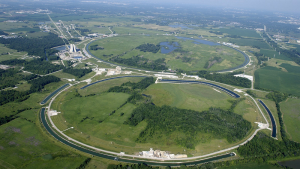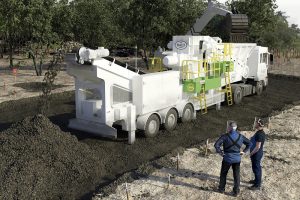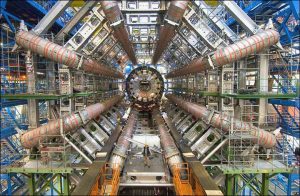We were once thought to believe – maybe back in grade school – that the smallest unit of matter is the atom. The word atom that came from the Greek word “atomos,” which means indivisible and were made of protons, neutrons, and electrons. Atoms that can be illustrated by drawing a spherical core, enveloped by overlapping oval lines that serves as orbits of the electron. The iconic diagram of the atom that has become the inspiration of many logo of scientific organizations – and the fascination of the brightest minds in science.
Scientists have proven that atoms were just the starting point. Atoms were just the beginning. Atoms is another universe that is worth digging.
While it is an exciting feat to look deeper into atoms, dissecting it is not as easy as using scalpel to cut open a frog during one of your high school lab experiments. It requires knowledge, effort and funding which closest comparison are space explorations.
It is an effort in the grandest scale to test the predictions of different theories of particle physics, including measuring the properties of the Higgs boson.
Building Big for Particles

The mysteries that are stored inside an atom is being unearthed in a facility that is 27-kilometer long, occupies two countries and requires thousands of people just to operate.
Its size is hard to fathom. Let’s simply describe it as the largest machine on earth.
The Large Hadron Collider (LHC) is the most powerful particle accelerator ever built and the biggest machine on earth. The accelerator is situated in a tunnel 100 meters underground at CERN, the European Organization for Nuclear Research, on the Franco-Swiss border near Geneva, Switzerland.
Its purpose is to propel charged particles to super-fast speeds and energies, then store them in a beam. The beam is composed of neutral particles moving the near speed of light. Through this process, scientist can store high-energy particles that are useful for fundamental and applied research in the sciences.
The LHC consists of a 27-kilometre ring of superconducting magnets with a number of accelerating structures boosting the energy of the particles along the way.
It happens in almost a snap, in an invisible environment clad by tubes and magnets. A couple of high-energy particle beams travel at close to the speed of light before they are made to collide. These particles – like heavy ions and lead ions – are guided around the accelerator ring by a strong magnetic field maintained by superconducting electromagnets. The electromagnets are made from coils of specialized electric cable that are subjected in a superconducting state
This method has allowed efficient conducting of electricity with little to no resistance or loss of energy.
The most energetic process of placing ions in a collision course is by no means possible in a small tube. In order to derive the unexplored particles of an atom, massive magnetic coils that span kilometers is needed. The ions need to gain enough momentum so it can ‘break’ or ‘react upon collision.
The energy requirement to run the machine is like putting 4000 coal-powered power plants together. The heat output of the process is way above the normal levels. Such is why in LHC, they are chilling the magnets to ‑271.3°C – a temperature colder than outer space – and are using liquid helium as the main cooling component.
Building to Add Meaning to the Standard Model

The ultimate goal of this gigantic operating machine is to provide an avenue for scientist to contribute to the Standard Model of Particle Physics.
The Standard Model details how the building blocks of matter interact under the presence of the four fundamental elements. All findings in particle physics has been summed up and boiled down to this model.
It illustrates the electromagnetic, weak and strong forces in the universe with the capability to classify the elementary particles.
It classifies and details the following elementary elements:
- They are the particles in an atom that have mass and exhibit a spin. They combine to constitute all hadrons (baryons and mesons)–i.e., all particles that interact by means of the strong force, the force that binds the components of the nucleus. Physicists have formed three groups under the quarks: up/down, charm/strange and top/bottom.
- Particles of half-integer spin that does not subject to strong interactions. Two main classes of leptons exist: charged leptons, and neutral leptons
- The particles that exhibits zero or integral spin and follows the statistical description given by S. N. Bose and Einstein. Includes fundamental particles such as photons, gluons, and W and Z bosons
- Higgs Boson. The elementary particle in the Standard Model of particle physics, produced by the quantum excitation of the Higgs field. It is defined as the “God Particle.” There has been no experiment that has seen or observed the before theoretical particle. However, the LHC, on July 4, 2012 announced that they have successfully found evidence of the particle. This particle is believed to be responsible for all the mass in the universe.
This interactive illustration shall help in understanding these elusive elements.
Since the discovery of Higgs Boson, the questions are piling up. What the scientist know, as of the moment is that the said particle exists, and can be summoned using their gigantic magnetic coils and kilometric tubes.
Building Even Bigger
The biggest questions require an even bigger collider. The discovery of the “God Particle” has spurred more interest in the field of particle physics. However, the best findings can only be produced using most capable collider.

CERN’s counterpart in the Far East, China’s Institute of High Energy Physics has announced that the conceptual design report for its Circular Electron Positron Collider (CEPC) has been released a few weeks ago.
The two-volume report containing the sophisticated technical details shows that it will be built to exceed the capabilities of LHC. According to the report, it would be a ten-year operation that will yield one million Higgs bosons. Plus one hundred million W bosons, and close to one trillion Z bosons. Billions of bottom quarks, charm quarks and tau-leptons will also be produced in the decays of the Z bosons.
